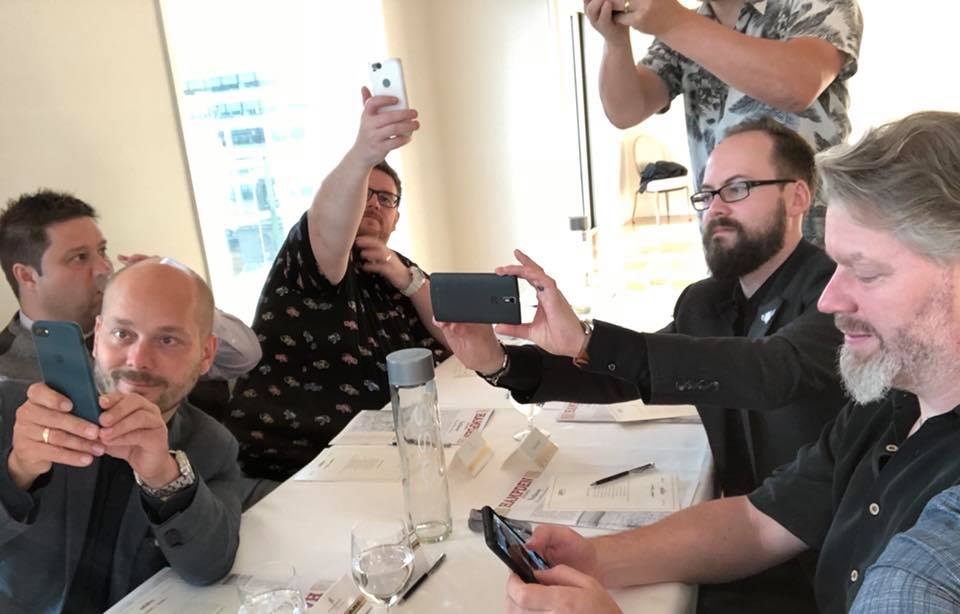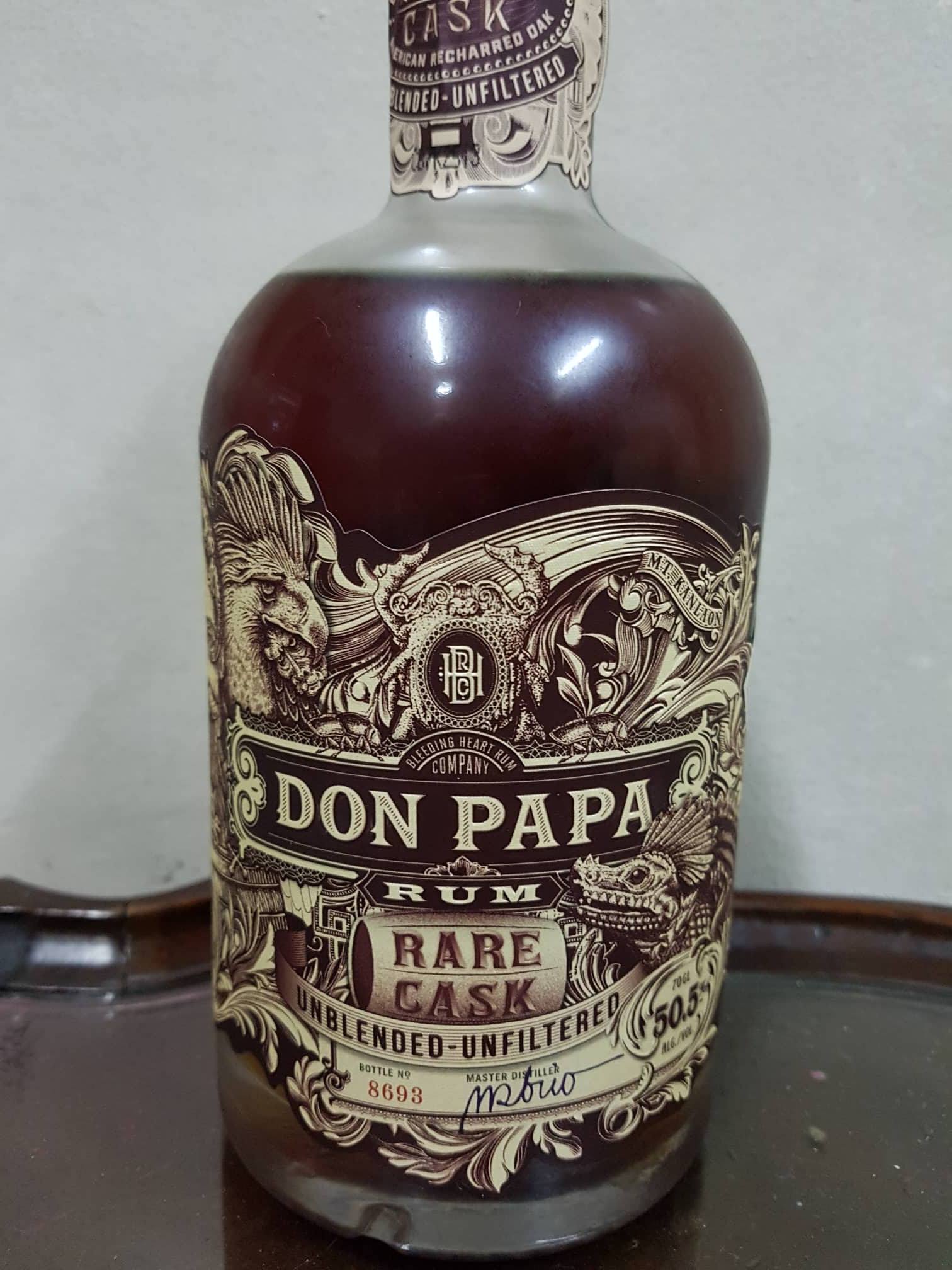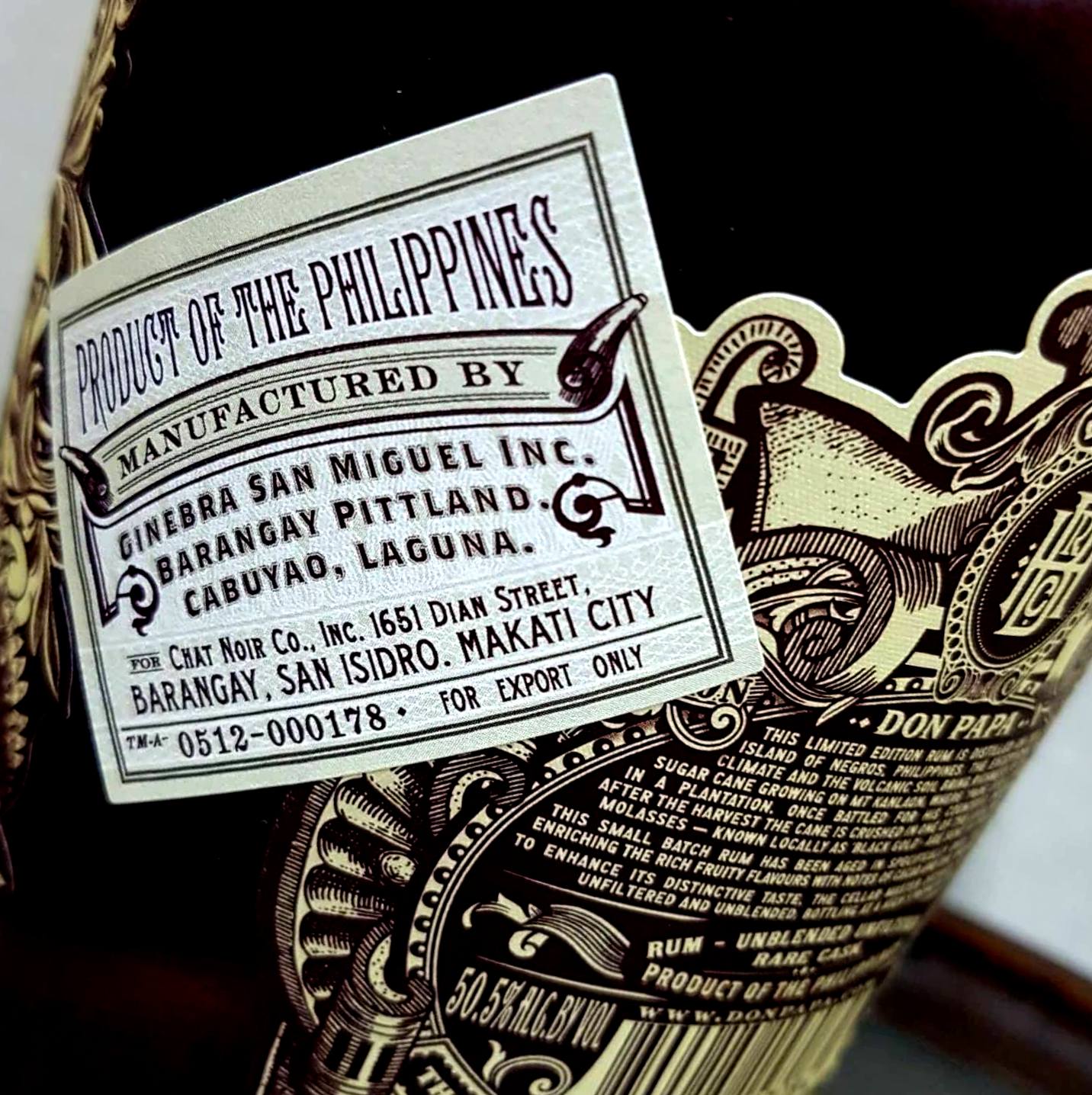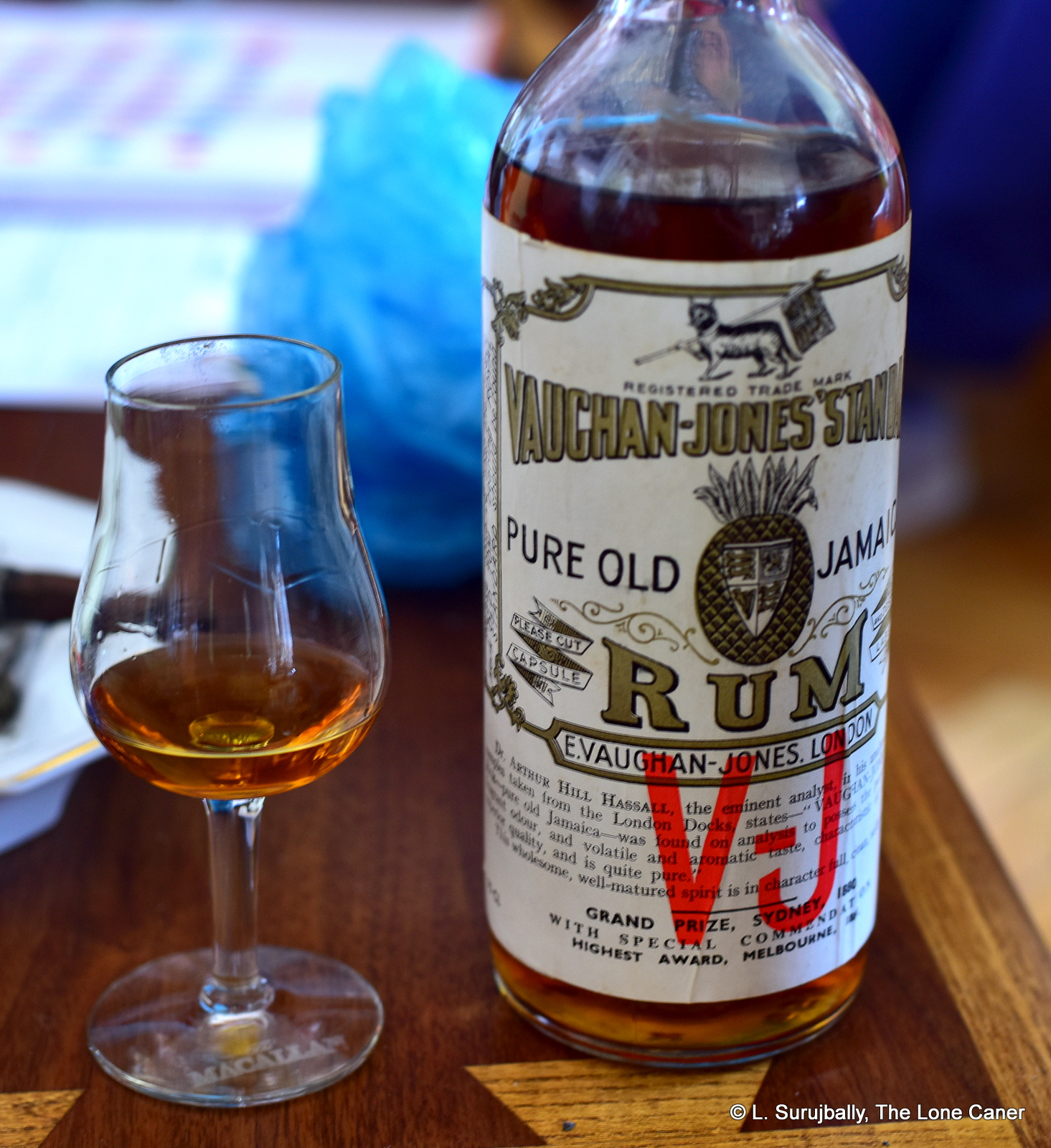
Let me run you past the tasting notes of this lower-proofed, higher-aged companion rum to the Laodi White I wrote about last time. It was an amber-coloured 42% which was aged, according to the rep at the 2019 rhumfest in Paris, for 5 years in French oak…so it seemed like it would be relatively tame and mild, taking into account the milquetoast strength and a barely-enough aging regimen (at least, compared to its unaged 56% blanc bro’).
But it wasn’t. To begin with, the nose – well, that was quite a nose, a Cyrano de Bergerac of rum noses. It was big, it was odd, it was startling and overall rather impossible to ignore. It smelled of old bookcases and old books in a disused manor-house library, of glue holding tattered paper together, of dark furniture and its varnish, and of a gone-to-seed aristocrat smoking an aromatic cigar while wearing a pair of brand new leather brogues still reeking of polish. It was a rum that was so peculiar that it encouraged equally peculiar phrasing just to describe it properly…at least at the inception. And after a while it did settle down to somewhat more traditional notes, and then we got a basketful of dark, ripe fruits – prunes, plums and apricots set off by the brighter and chirpier red currants and pomegranates, behind which lurked a faint aroma of coffee and unsweetened chocolate and a very pleasant nutty hint.
It smelled light and delicate, and dark and heavy, all at the same time, and one could only wonder what the thing could possibly taste like after such an entrance. “Flavourful” is one word that could be used without apology. The dustiness of age receded into memory and a nicely solid rum emerged and snapped into focus. It tasted of caramel, toffee, blancmange, white chocolate, almonds, coffee, vanilla, breakfast spices, cinnamon – all the expected hits, I guess you could say. But it took a step up once the fruits come marching in, because then there was a balanced offset of tart fruits to the firm and thick tastes that came before: prunes and plums, as well as guavas, overripe mangoes, peaches in syrup, green peas (not a fruit, I know) – and a much stronger shading of coffee grounds, as if this thing was channelling Dictador or something. It never quit went went away, that coffee taste, even on the finish, which was well balanced but far too short, ending with a final exhale, a last shuddering sigh, of fruit and caramel and vanilla, and then was gone.

So, all in all, a surprisingly aromatic rum from Laodi. Just to recap very briefly, this is a Laos-located, Japanese-run distillery on the Thai border, who are perhaps more known for their flavoured low-proof “marriage” rums (coming in coffee, plum, coconut, passion fruit and sugar cane varieties); they use a vaccuum-distillation machine to produce a rhum from cane juice at 47% or so and then rest it in stainless steel tanks for up to five years for the Brown rhum.
Yet they do not use actual barrels in their production process. “Ageing in oak barrels requires means that we do not have,” said Mr. Ikuzo Inoue to Damien Sagnier in a 2017 interview, and so, in an interesting departure from the norm, the company uses a different technique – it dumps French oak chips into the vat (this is also mentioned casually and without elaboration on their website) and that provides the “aged” profile, which, after all, is just the interaction between wood and spirit. By varying the amount of chips, and the amount of char they have (and so the surface area in contact with the spirit), it is therefore possible to extract a rhum at the other end which has a more intense profile than an equivalently barrel-only-aged product.
What this means is that by common parlance, the rum is not aged at all – it is infused. Moreover, the process – both distillation and infusion – means that elements of the profile deriving from oxidation and evaporation are lacking, and there is a minimal angel’s share from the steel vats. To their credit, nowhere does Laodi say that their rhum is “aged X years” and I think the terminology used by the rep in response to my questions was not meant to imply true ageing. It does raise some flags, though, because there is no real regulation of or accepted terminology for this kind of flavour enhancement / infusion / ersatz ageing process. The closest one can get is the process of using boisé in cognac, or creative enhancement often imputed to low-rent rum brands. Laodi might not have intended it, but surely this methodology will create food for thought for regulators and commentators in the years to come.
All that aside, for me as a reviewer, I have to ask, does it work? I’d say yes it does – I mean, there were a lot more flavour elements coming out of the Brown than I was expecting. I think the rhum is tasty, a bit on the weak side, too thin at the end and needs some more boosting, but a pleasant cane juice spirit that tastes aged (Mr. Sagnier himself remarked that he could not tell the difference), and is more enjoyable than that age suggests it might be. The issues it raises, though, are likely to trouble rum chums long after the bottle they bought is finished and they move on to the next one.
(#626)(82/100)
Other notes
Some of the questions that occurred to me as I was writing the last paragraphs on the subject of using wood chips were:
- Does it fly in the face of the standard and accepted ways that ageing is defined? (the rum does, after all, rest for the requisite number of years in a vat, according to Laodi).
- Will it be derided and decried by those who adhere to a more traditional way of ageing rum and consider it a form of cheating?
- How many chips are considered the equivalent of one barrel’s surface contact area? How big do they have to be? And, if you want to go to the extreme, why not just use boise or wood powder
- Is there a limit?
- Is it forbidden in any way? Is it legal?
I’m not sure. No standard I’ve read addresses any of these issues, not really. Before the sugar and additives debate took over, it was often mentioned (or accusations were made) that extra wood chips were added to barrels of some rums to make the flavour more intense, but this gradually fell out of public consciousness in favour of dosing, additives and wet barrels. I believe that at bottom, ageing can be defined as the complex interaction of wood and spirit over time, and whether the wood is on the outside (barrels) or the inside (chips) can be seen as a matter of terminology, semantics and fine parsing of regulations by the pedants.
But that obscures the fact that a barrel is a barrel, of known and uniform size and internal surface area, a common and well-understood standard used the world around for centuries. Wooden chips or sticks are a totally different thing, and adding an undisclosed amount of chips to an inert vessel just doesn’t seem to be the same, somehow, especially since there are no standards governing how they are, or can be, used.
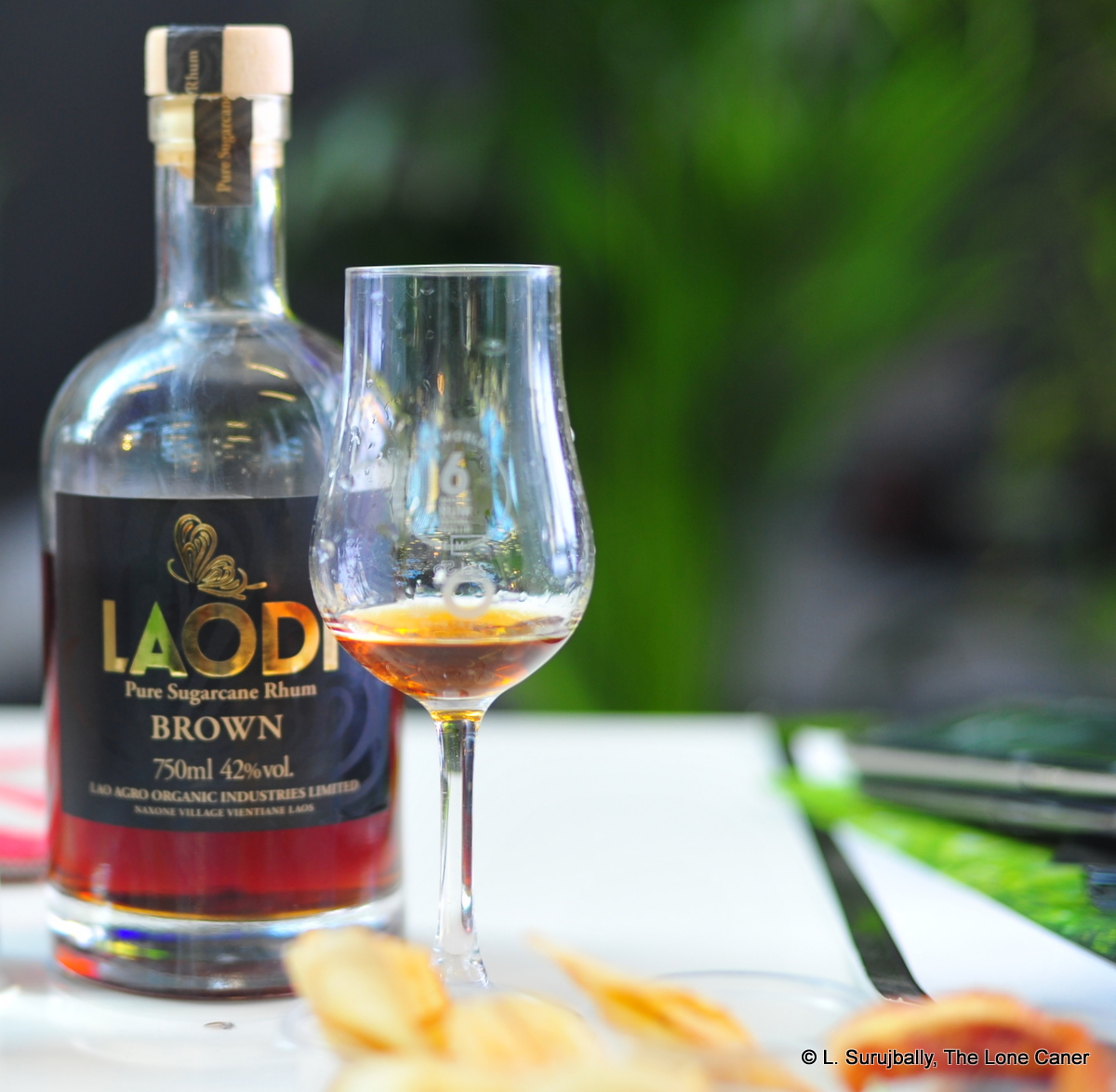
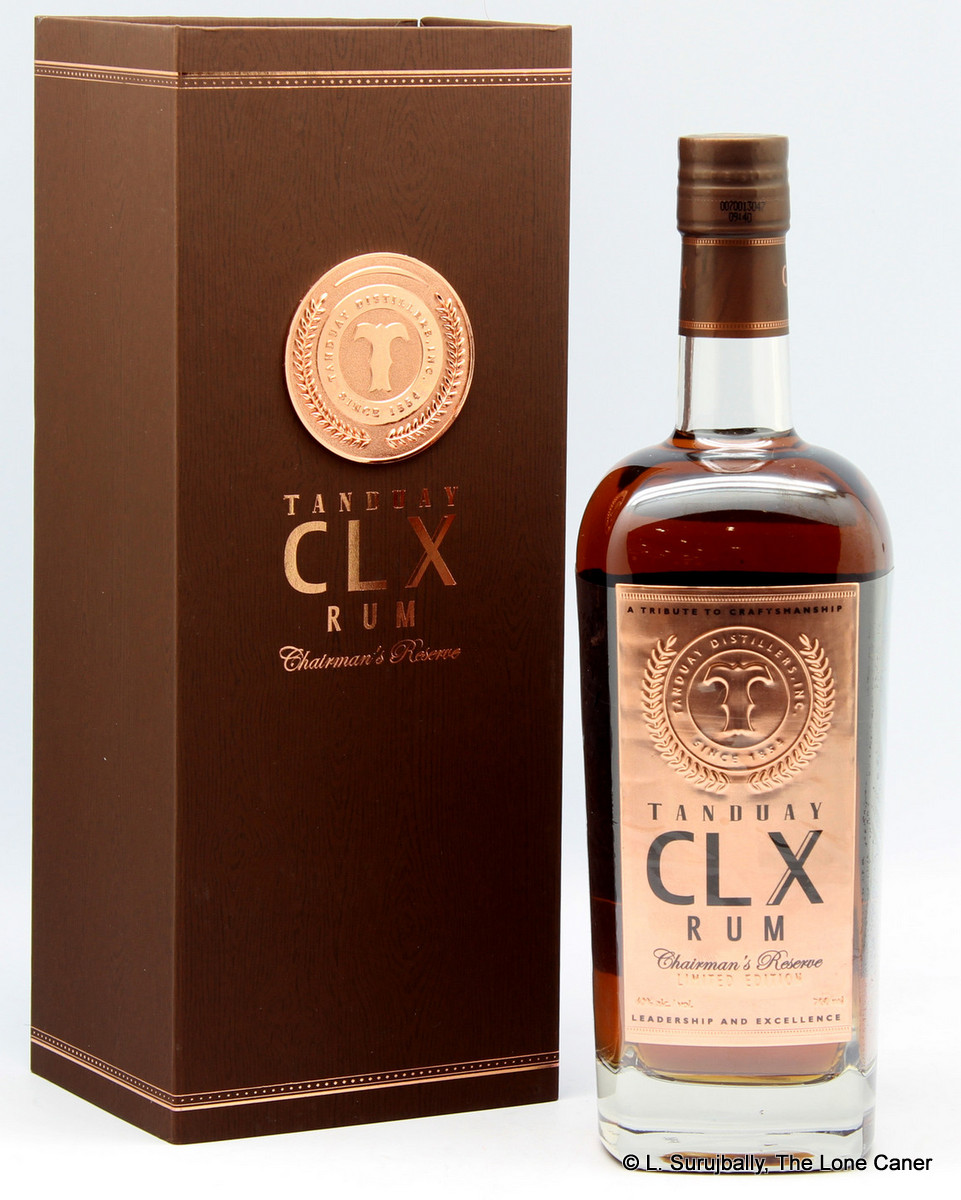
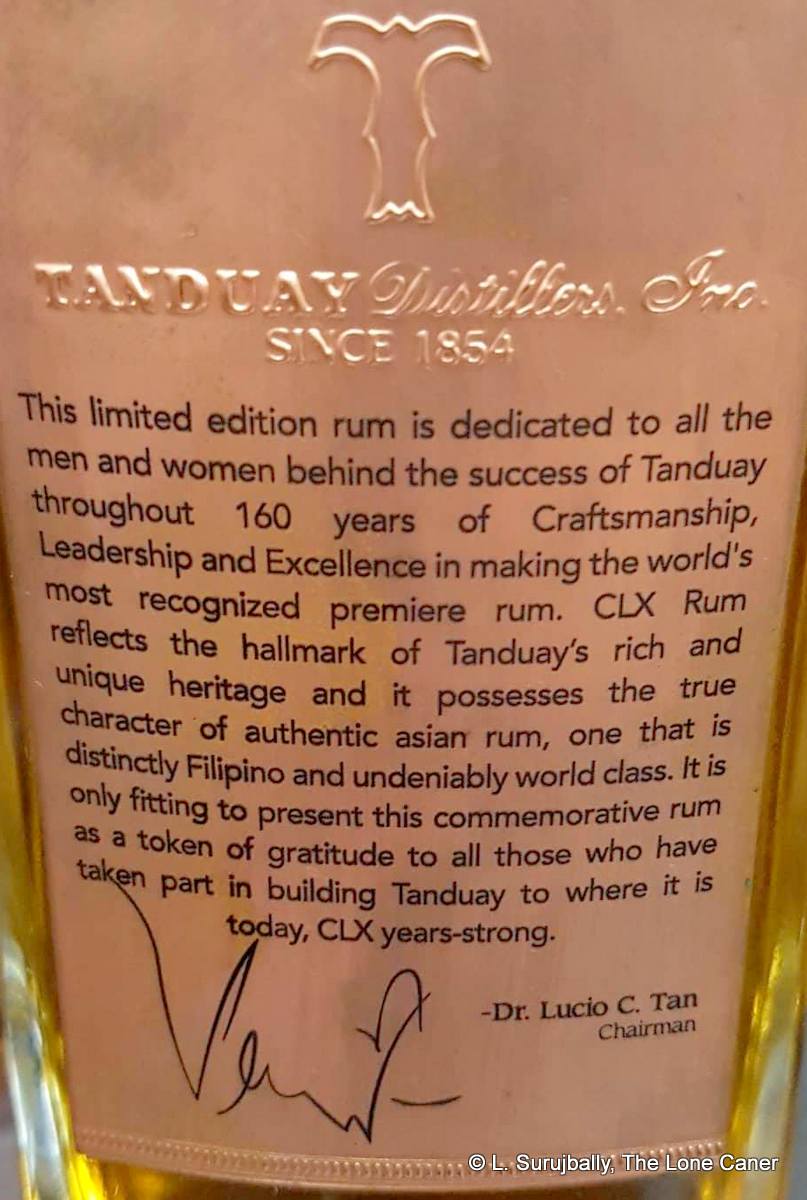 Anyway, when we’re done with do all the contorted company panegyrics and get down to the actual business of trying it, do all the frothy statements of how special it is translate into a really groundbreaking rum?
Anyway, when we’re done with do all the contorted company panegyrics and get down to the actual business of trying it, do all the frothy statements of how special it is translate into a really groundbreaking rum? 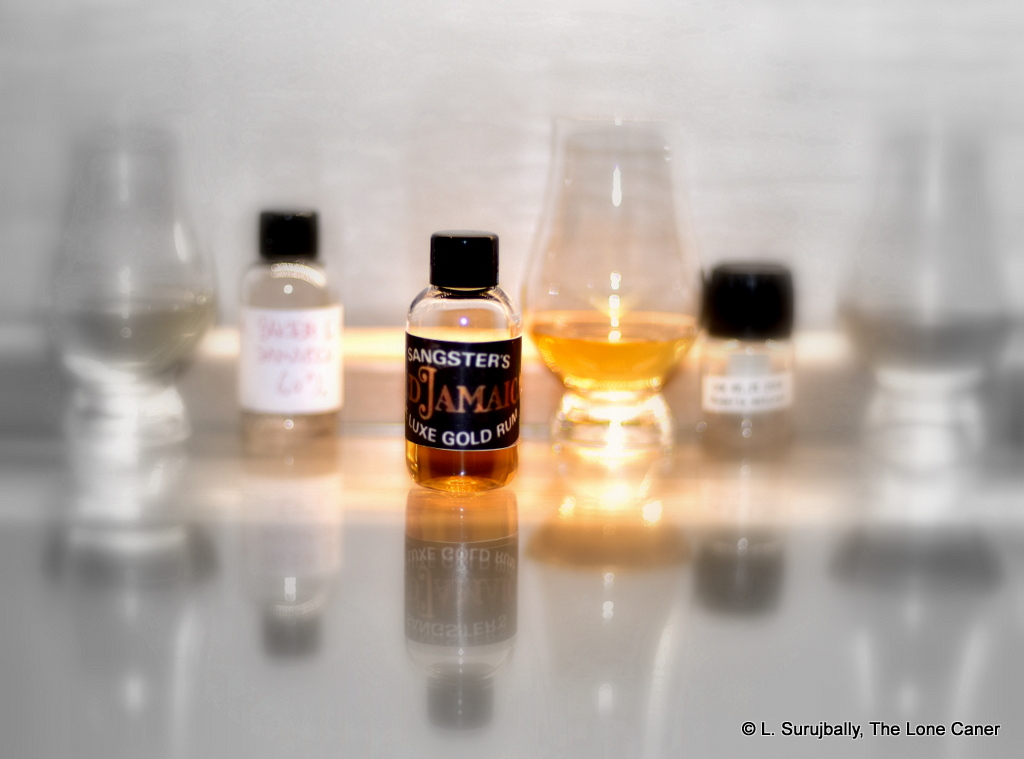
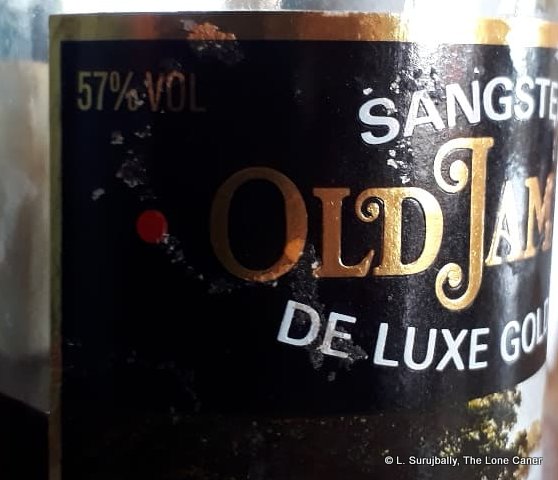 It is unknown from where he sourced his base stock. Given that this DeLuxe Gold rum was noted as comprising pot still distillate and being a blend, it could possibly be Hampden, Worthy Park or maybe even Appleton themselves or, from the profile, Longpond – or some combination, who knows? I think that it was likely between 2-5 years old, but that’s just a guess. References are slim at best, historical background almost nonexistent. The usual problem with these old rums. Note that after Dr. Sangster relocated to the Great Distillery in the Sky, his brand was acquired post-2001 by J. Wray & Nephew who do not use the name for anything except the rum liqueurs. The various blends have been discontinued.
It is unknown from where he sourced his base stock. Given that this DeLuxe Gold rum was noted as comprising pot still distillate and being a blend, it could possibly be Hampden, Worthy Park or maybe even Appleton themselves or, from the profile, Longpond – or some combination, who knows? I think that it was likely between 2-5 years old, but that’s just a guess. References are slim at best, historical background almost nonexistent. The usual problem with these old rums. Note that after Dr. Sangster relocated to the Great Distillery in the Sky, his brand was acquired post-2001 by J. Wray & Nephew who do not use the name for anything except the rum liqueurs. The various blends have been discontinued. Nose – Opens with the scents of a midden heap and rotting bananas (which is not as bad as it sounds, believe me). Bad watermelons, the over-cloying reek of genteel corruption, like an unwashed rum strumpet covering it over with expensive perfume. Acetones, paint thinner, nail polish remover. That is definitely some pot still action. Apples, grapefruits, pineapples, very sharp and crisp. Overripe peaches in tinned syrup, yellow soft squishy mangoes. The amalgam of aromas doesn’t entirely work, and it’s not completely to my taste…but intriguing nevertheless It has a curious indeterminate nature to it, that makes it difficult to say whether it’s WP or Hampden or New Yarmouth or what have you.
Nose – Opens with the scents of a midden heap and rotting bananas (which is not as bad as it sounds, believe me). Bad watermelons, the over-cloying reek of genteel corruption, like an unwashed rum strumpet covering it over with expensive perfume. Acetones, paint thinner, nail polish remover. That is definitely some pot still action. Apples, grapefruits, pineapples, very sharp and crisp. Overripe peaches in tinned syrup, yellow soft squishy mangoes. The amalgam of aromas doesn’t entirely work, and it’s not completely to my taste…but intriguing nevertheless It has a curious indeterminate nature to it, that makes it difficult to say whether it’s WP or Hampden or New Yarmouth or what have you.  Finish – Shortish, dark off-fruits, vaguely sweet, briny, a few spices and musky earth tones.
Finish – Shortish, dark off-fruits, vaguely sweet, briny, a few spices and musky earth tones.
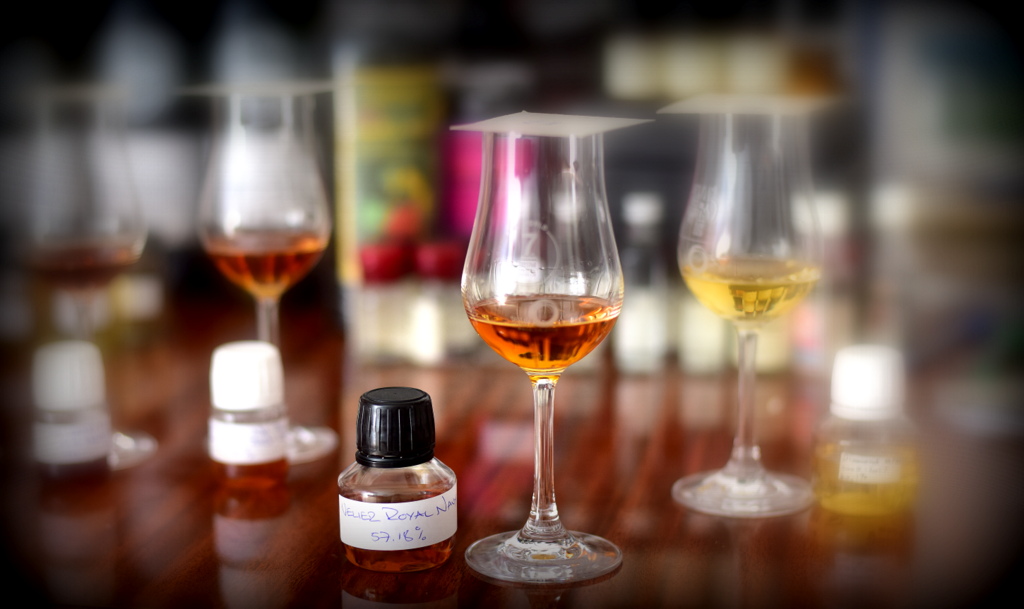
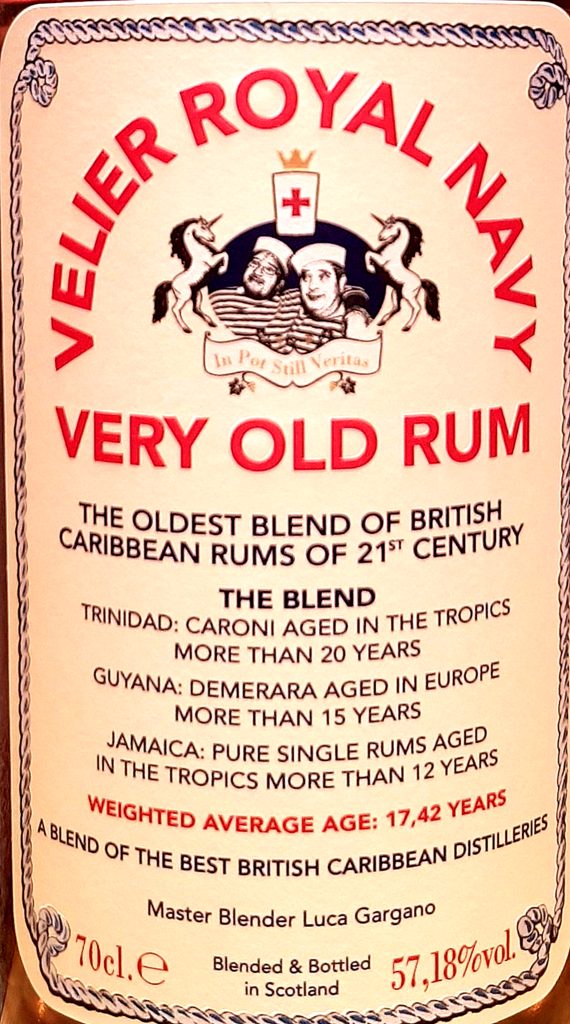 The nose suggested that this wasn’t far off. Mild for the strength, warm and aromatic, the first notes were deep petrol-infused salt caramel ice cream (yeah, I know how that sounds). Combining with that were some rotten fruit aromas (mangoes and bananas going off), brine and olives that carried the flag for the Jamaicans, with sharp bitter woody hints lurking around; and, after a while, fainter wooden and licorice notes from the Mudlanders (I’d suggest Port Mourant but could be the Versailles, not sure). I also detected brown sugar, molasses and a sort of light sherry smell coiling around the entire thing, together with smoke, leather, wood, honey and some cream tarts. Quite honestly, there was so much going on here that it took the better part of an hour to get through it all. It may be a navy grog, but definitely is a sipper’s delight from the sheer olfactory badassery.
The nose suggested that this wasn’t far off. Mild for the strength, warm and aromatic, the first notes were deep petrol-infused salt caramel ice cream (yeah, I know how that sounds). Combining with that were some rotten fruit aromas (mangoes and bananas going off), brine and olives that carried the flag for the Jamaicans, with sharp bitter woody hints lurking around; and, after a while, fainter wooden and licorice notes from the Mudlanders (I’d suggest Port Mourant but could be the Versailles, not sure). I also detected brown sugar, molasses and a sort of light sherry smell coiling around the entire thing, together with smoke, leather, wood, honey and some cream tarts. Quite honestly, there was so much going on here that it took the better part of an hour to get through it all. It may be a navy grog, but definitely is a sipper’s delight from the sheer olfactory badassery.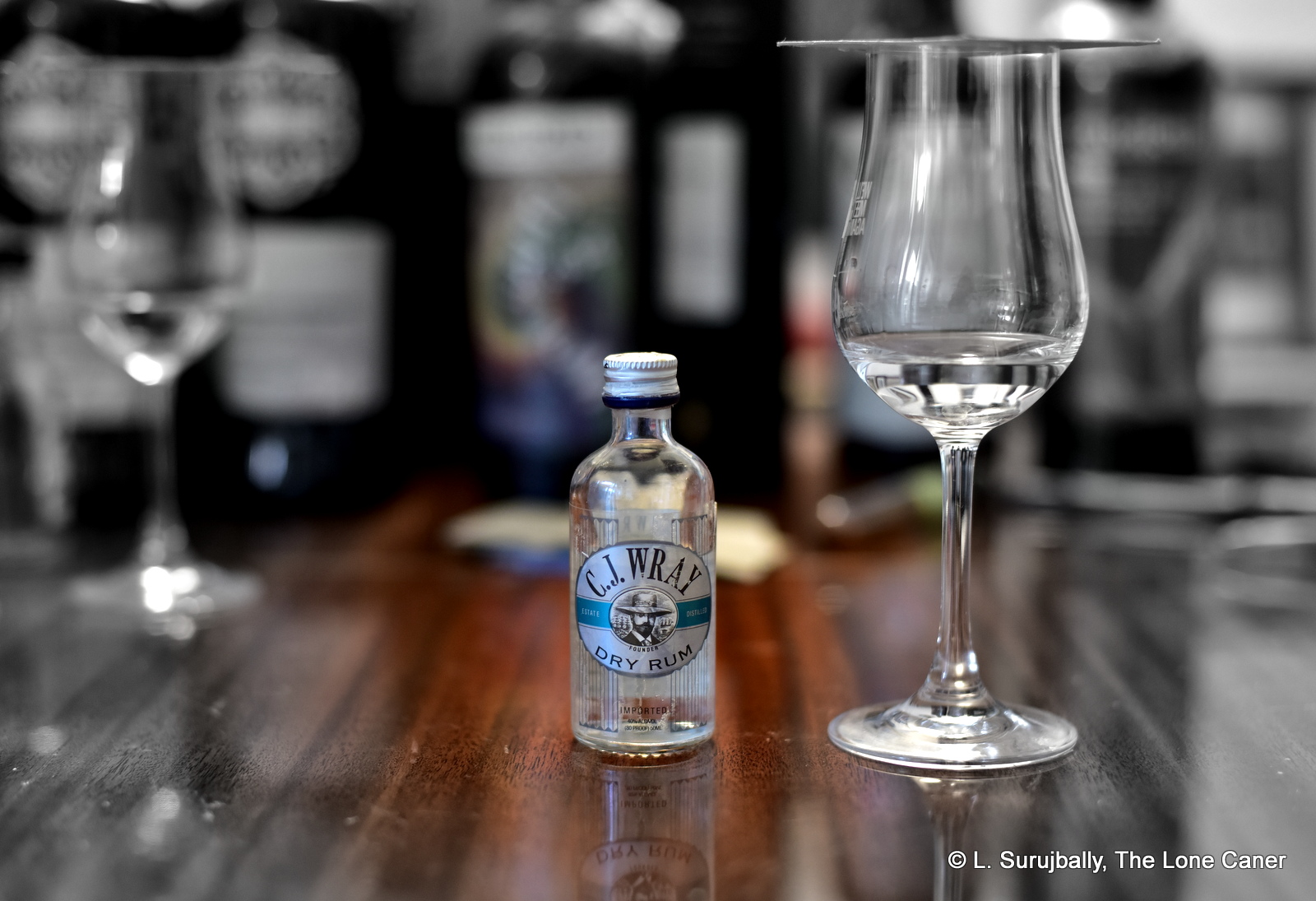
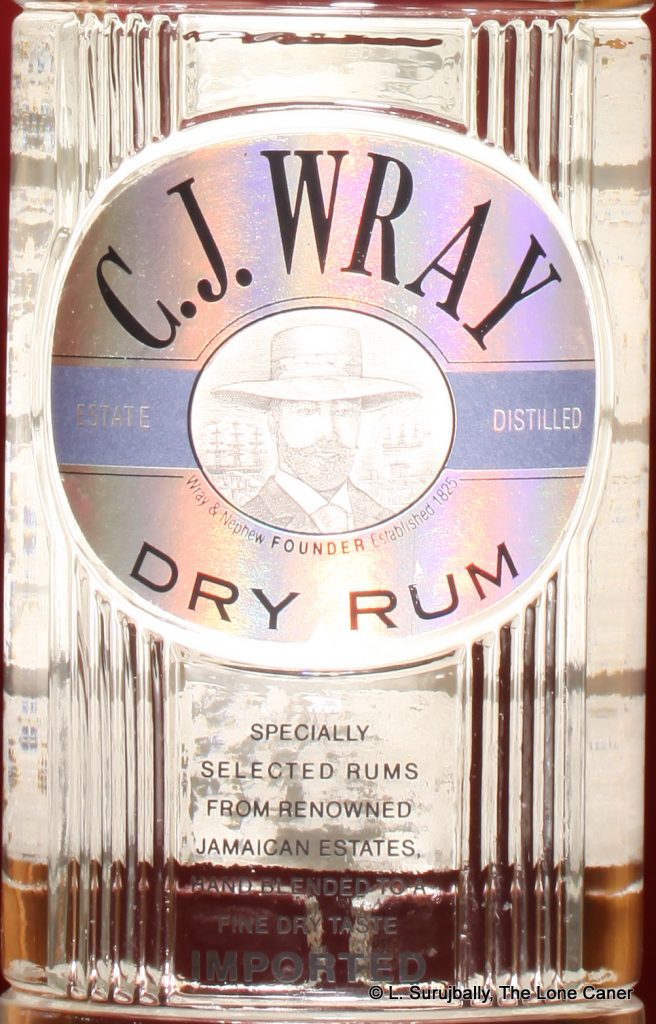 Technical details are murky. All right, they’re practically non-existent. I think it’s a filtered column still rum, diluted down to standard strength, but lack definitive proof – that’s just my experience and taste buds talking, so if you know better, drop a line. No notes on ageing – however, in spite of one reference I dug up which noted it as unaged, I think it probably was, just a bit.
Technical details are murky. All right, they’re practically non-existent. I think it’s a filtered column still rum, diluted down to standard strength, but lack definitive proof – that’s just my experience and taste buds talking, so if you know better, drop a line. No notes on ageing – however, in spite of one reference I dug up which noted it as unaged, I think it probably was, just a bit.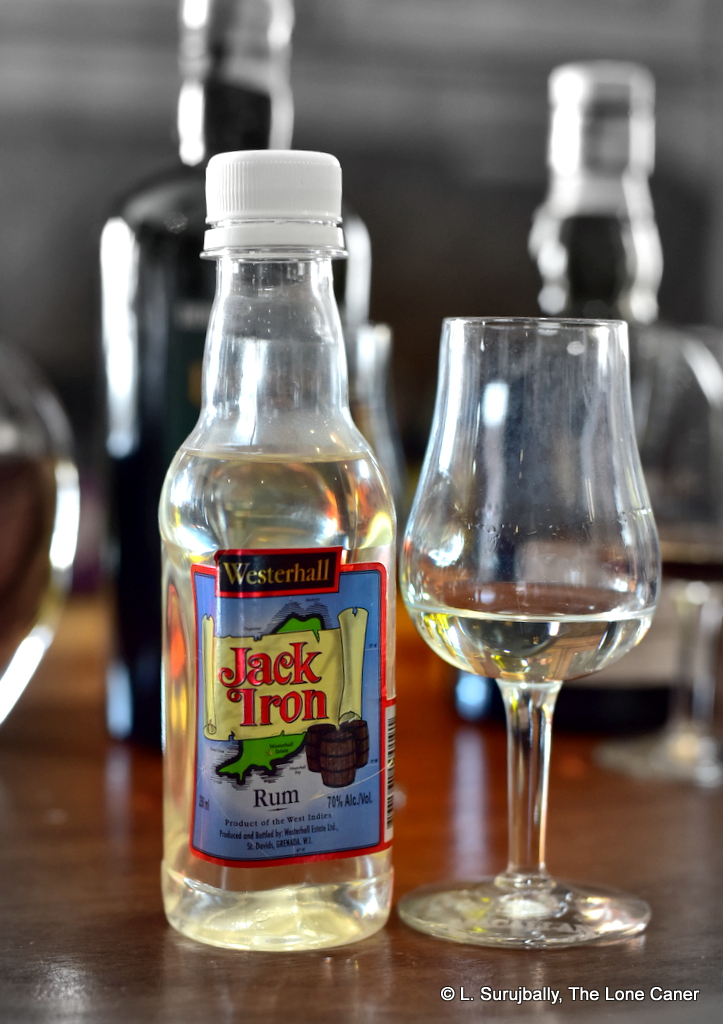 The Jack Iron rum from Westerhall is a booming overproof issued both in a slightly aged and a white version, and both are a whopping 70% ABV. While you can get it abroad — this bottle was tried in Italy, for example — my take is that it’s primarily a rum for local consumption (though which island can lay claim to it is a matter of idle conjecture), issued to paralyze brave-but-foolhardy tourists who want to show off their Chewbacca chests by drinking it neat, or to comfort the locals who don’t have time to waste getting hammered and just want to do it quick time. Add to that the West Indian slang for manly parts occasionally being iron and you can sense a sort of cheerful and salty islander sense of humour at work (see “other notes” below for an alternative backstory).
The Jack Iron rum from Westerhall is a booming overproof issued both in a slightly aged and a white version, and both are a whopping 70% ABV. While you can get it abroad — this bottle was tried in Italy, for example — my take is that it’s primarily a rum for local consumption (though which island can lay claim to it is a matter of idle conjecture), issued to paralyze brave-but-foolhardy tourists who want to show off their Chewbacca chests by drinking it neat, or to comfort the locals who don’t have time to waste getting hammered and just want to do it quick time. Add to that the West Indian slang for manly parts occasionally being iron and you can sense a sort of cheerful and salty islander sense of humour at work (see “other notes” below for an alternative backstory).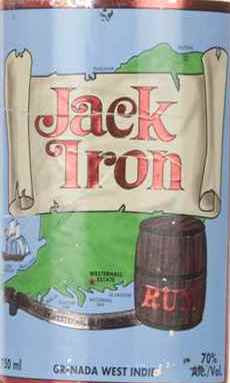

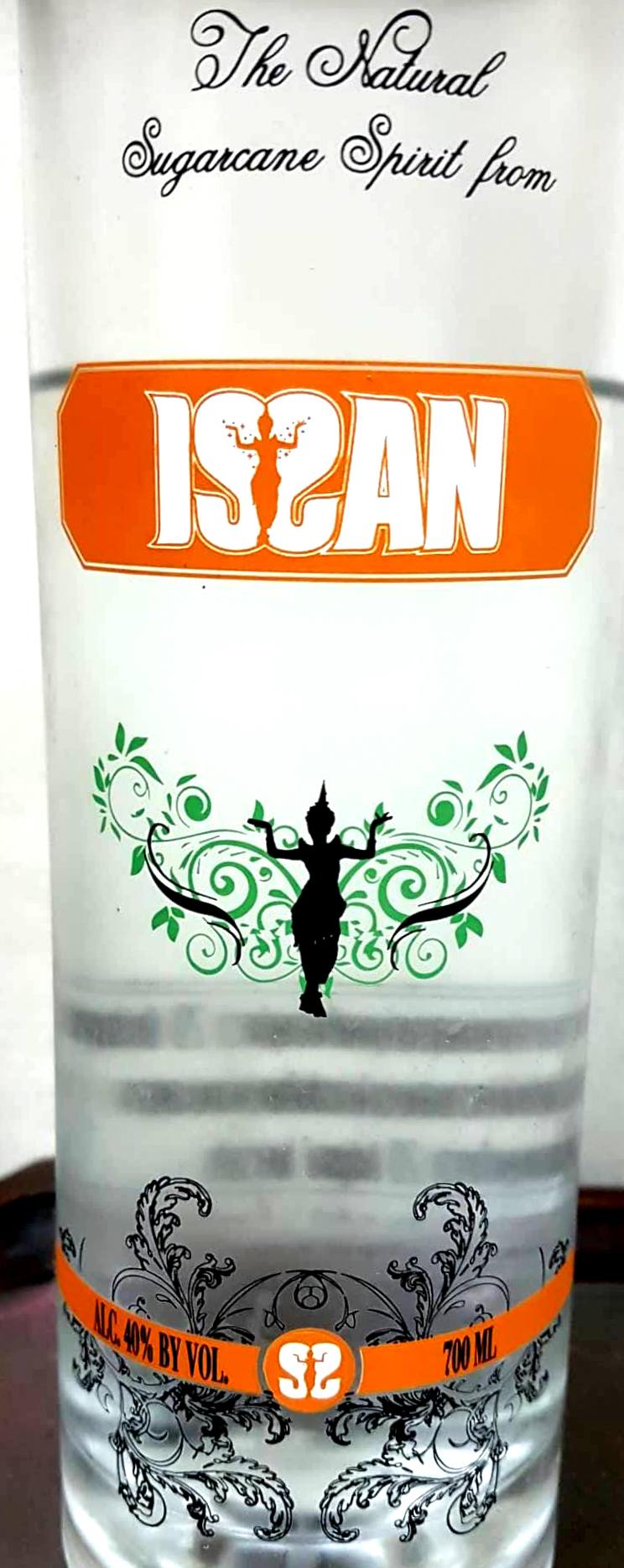 Thailand doesn’t loom very large in the eyes of the mostly west-facing rum writers’ brigade, but just because they make it for the Asian palate and not the Euro-American cask-loving rum chums, doesn’t mean what they make can be ignored; similar in some respects to the light rums from Puerto Rico, Dominican Republic, Panama and Latin America, they may not be rums
Thailand doesn’t loom very large in the eyes of the mostly west-facing rum writers’ brigade, but just because they make it for the Asian palate and not the Euro-American cask-loving rum chums, doesn’t mean what they make can be ignored; similar in some respects to the light rums from Puerto Rico, Dominican Republic, Panama and Latin America, they may not be rums 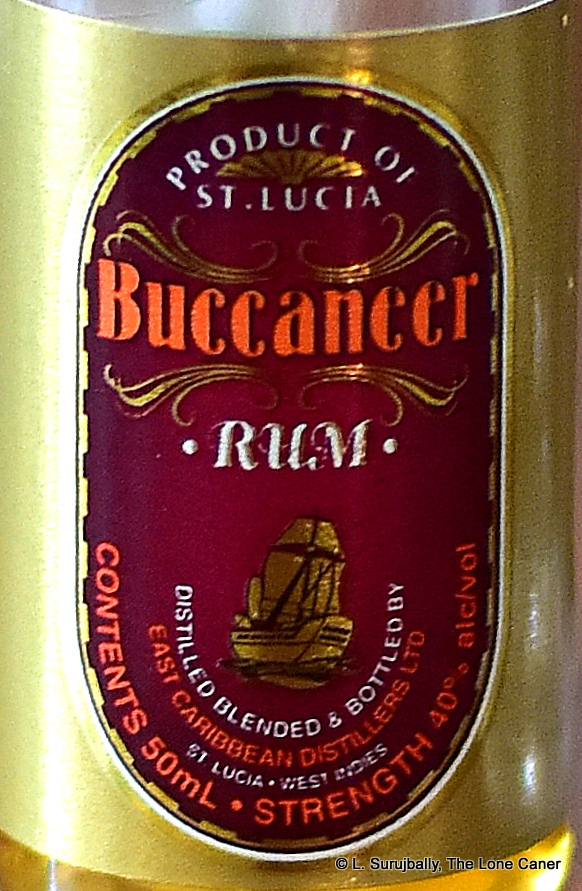

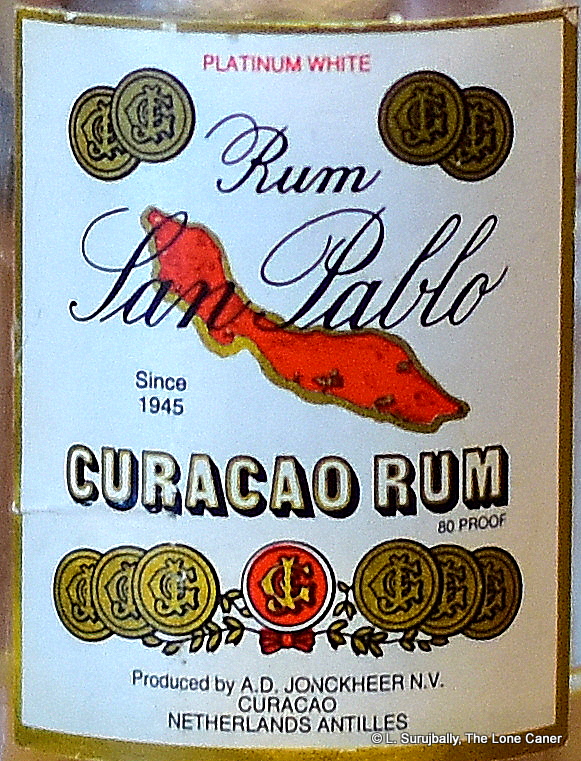 And that creates a rum of uncommon docility. In fact, it’s close to being the cheshire cat of rums, so vaguely does it present itself. The soft silky nose was a watery insignificant blend of faint nothingness. Sugar water – faint; cucumbers – faint; cane juice – faint; citrus zest – faint (in fact here I suspect the lemon was merely waved rather gravely over the barrels before being thrown away); some cumin, and it’s possible that some molasses zipped past my nose, too fast to be appreciated.
And that creates a rum of uncommon docility. In fact, it’s close to being the cheshire cat of rums, so vaguely does it present itself. The soft silky nose was a watery insignificant blend of faint nothingness. Sugar water – faint; cucumbers – faint; cane juice – faint; citrus zest – faint (in fact here I suspect the lemon was merely waved rather gravely over the barrels before being thrown away); some cumin, and it’s possible that some molasses zipped past my nose, too fast to be appreciated. 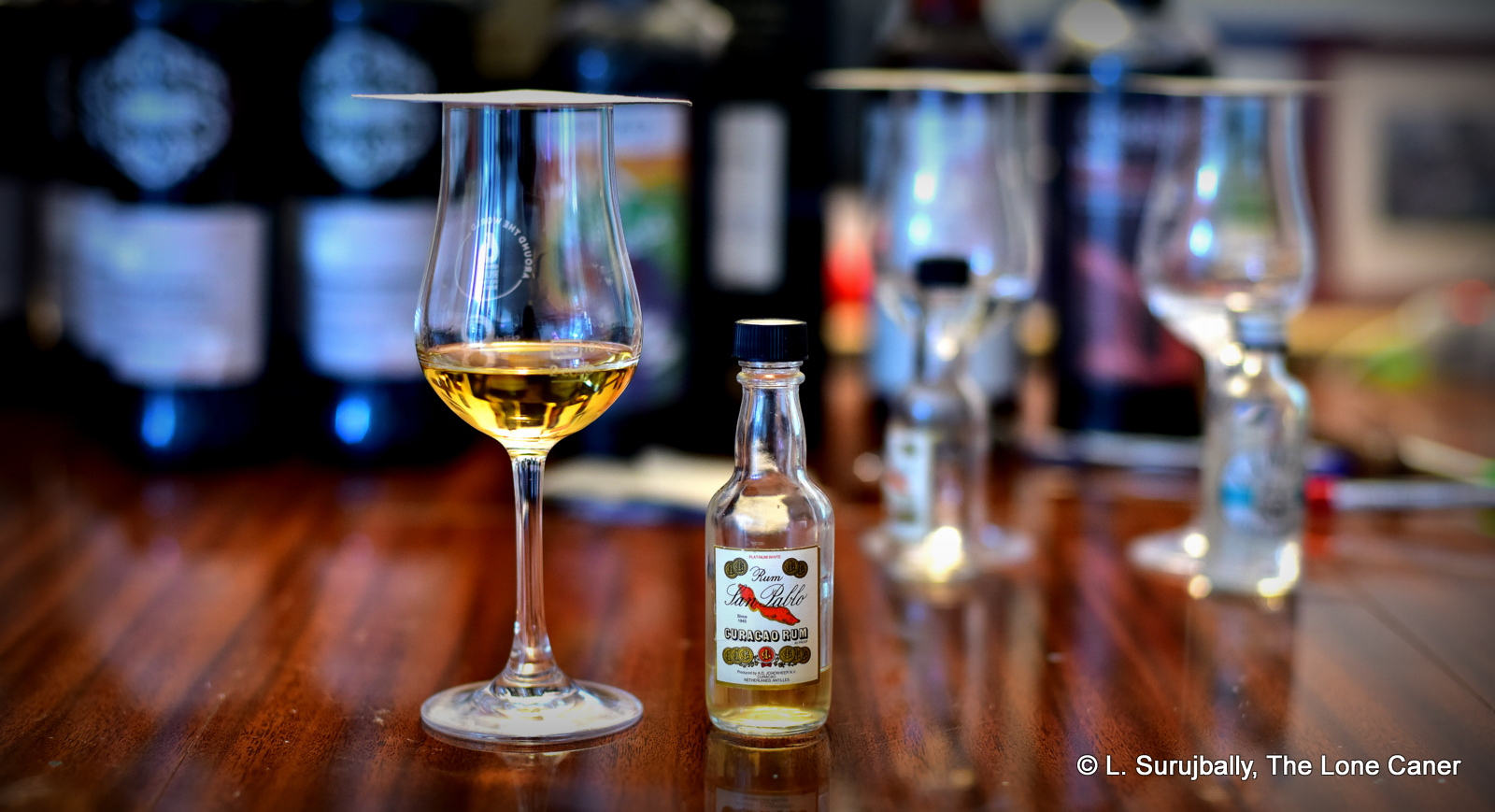
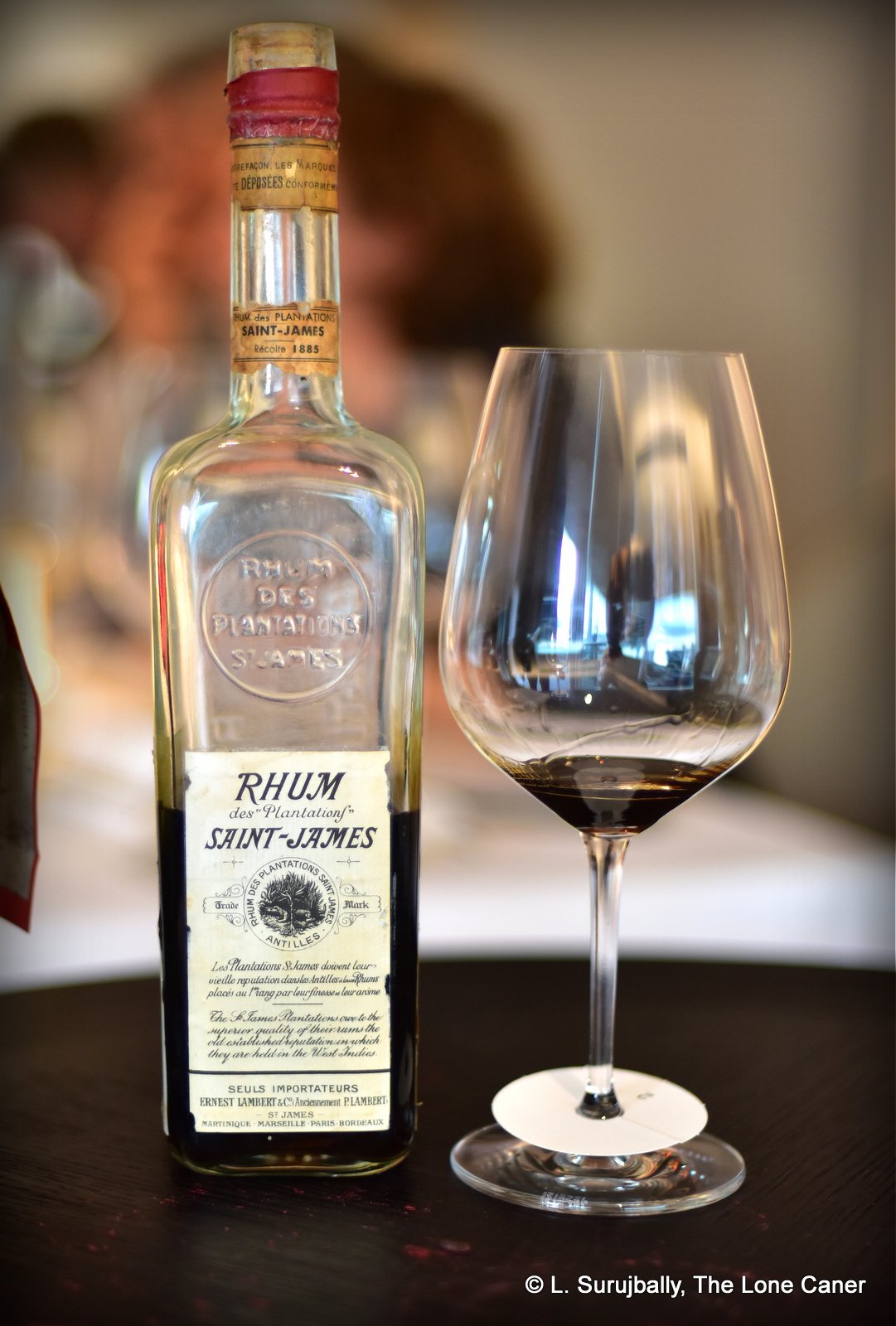
 Still, we had to get facts, and a lot of our preliminary conversations and subsequent texts and messages revolved around the data points, which are as follows: the rhum was made in 1885 on Martinique, and derived from cane juice that was boiled prior to fermentation. Although the exact age is unknown, it was certainly shipped off the island before Mount Pelée erupted in 1902 and destroyed all stocks there, so at an absolute maximum it can be 17 years old. This is, however unlikely – few rums or rhums were aged that long back then, and the opinion of the master blender of St James (Mark Sassier) that it was 8-10 years old is probably the best one (
Still, we had to get facts, and a lot of our preliminary conversations and subsequent texts and messages revolved around the data points, which are as follows: the rhum was made in 1885 on Martinique, and derived from cane juice that was boiled prior to fermentation. Although the exact age is unknown, it was certainly shipped off the island before Mount Pelée erupted in 1902 and destroyed all stocks there, so at an absolute maximum it can be 17 years old. This is, however unlikely – few rums or rhums were aged that long back then, and the opinion of the master blender of St James (Mark Sassier) that it was 8-10 years old is probably the best one (

